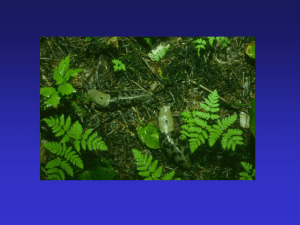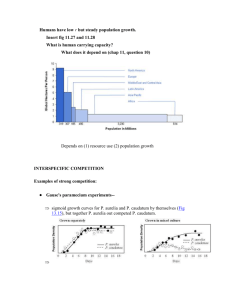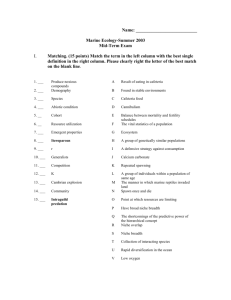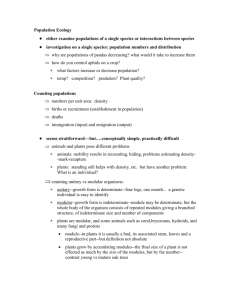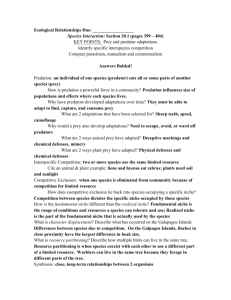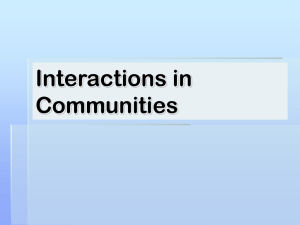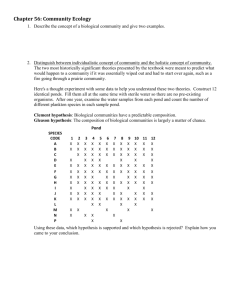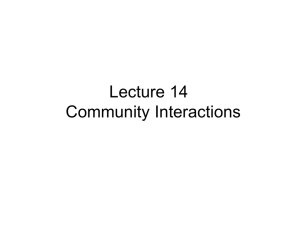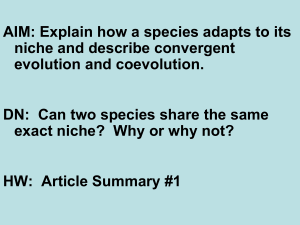Ecology Community Relationships ppt.
advertisement
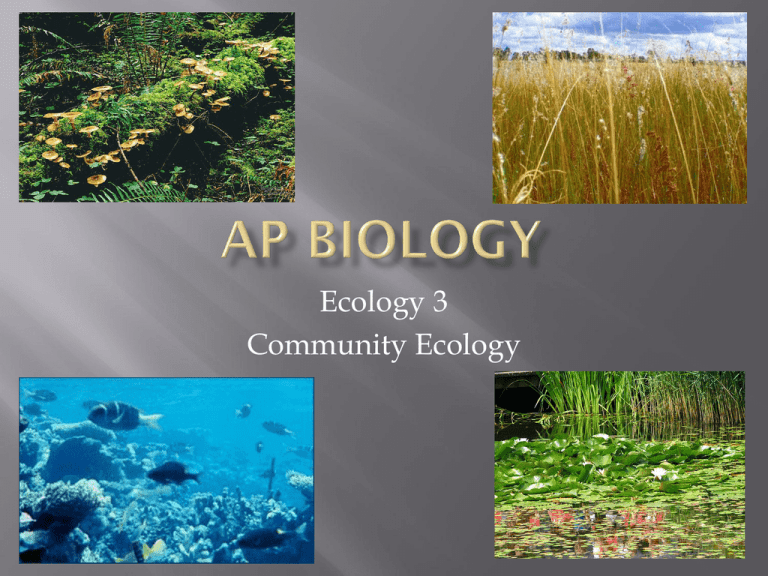
Ecology 3 Community Ecology A biological community is a group of populations of different species living close enough to interact. Community interactions are classified by whether they help, harm, or have no effect on the species involved. Some key relationships in the life of an organism are its interactions with individuals of other species in the community. Lesser Long-nose Bat feeds on nectar from Saguaro Cacti. In turn, the Saguaro is pollinated. Lynx Fox Lynx and fox both compete for the Snowshoe Hare Competition between two species is a -/interaction that occurs when individuals of different species compete for a resource that limits their growth and survival. What happens in a community over time when two species directly compete for limited resources? Two species cannot coexist in the same place. One will use the resource more efficiently and thus, reproduce more successfully. The other will be eliminated. Paramecium aurelia; Paramecium caudatum E.F. Gause, 1934, studied two closely related species of ciliated protists. When cultured together, P. caudatum was driven to extinction in the culture. This is called competitive exclusion. The sum of a species’ use of the biotic and abiotic resources in its environment. If an organisms’ habitat is its “address”, then an organisms’ niche is its “profession”. Its niche is its ecological role in the community—how it “fits into” an ecosystem. This tropical lizard’s niche consists of, among other things: the temperature range it tolerates, the size of branches on which it perches, the time of day when it is active, and the sizes and kinds of insects it eats. Two species cannot coexist permanently in a community if their niches are the same. Resource partitioning allows two similar species to coexist, if their niches are modified so they aren’t identical. Resource partitioning among Dominican Republic lizards (Anoles) A. Distichus perches on fence posts and sunny surfaces. A. Insolitus perches on shady branches As a result of competition, a species fundamental niche (its’ optimum niche— where it could be living) may be different than its’ realized niche (where and how it actually lives). Green Tree Python Ecologist J. Connell studied two barnacle species that have a stratified distribution along the coast of Scotland. Chthamalus is usually found higher on the rocks than Balanus. He removed Balanus from certain areas and found that Chthamalus moved to lower rocks. Connell found that Chthamalus has a much smaller realized niche than its fundamental niche. Predation is a +/- interaction between species in which one species, the predator, kills and eats the other, they prey. (Qu. Is an animal killing and eating a plant a predator?) Just as predators possess adaptations for capturing prey, prey animals have adaptations that help them avoid being eaten. Cryptic coloration, or camouflage, makes prey difficult to spot. Canyon Tree Frogs Pygmy Seahorse Mutualism is an interaction between two species in a community that benefits both organisms. How is this relationship mutually beneficial for both species? Certain species of acacia trees in Central and South America have hollow thorns that house stinging ants of the species Pseudomyrmex. The ants feed on nectar and proteins produced by the trees. The acacia benefits because the ants will attack anything that touches the tree, remove fungal spores and clip vegetation that grows close to the acacia. The remora is a “hitchhiker” species that hitches a ride on the shark. It benefits by eating the scraps from the sharks’ meal. The shark appears unaffected by the presence of the remora……Or is it? In what way could the shark be harmed? In commensalism, two species interact in a community and one species benefits while the other is neither helped nor harmed. Cattle egrets feed on insects flushed out of the grass by grazing cattle. In parasitism, two Brood parasitism is seen here—a species interact and Common Cuckoo one organism benefits is being raised by a Reed Warbler. by feeding on or The mother inside another Cuckoo laid her organism. egg in the Warbler’s nest! The other organism is harmed by this This tomato interaction, but is hornworm is covered with rarely killed. cocoons of pupating braconid wasps
